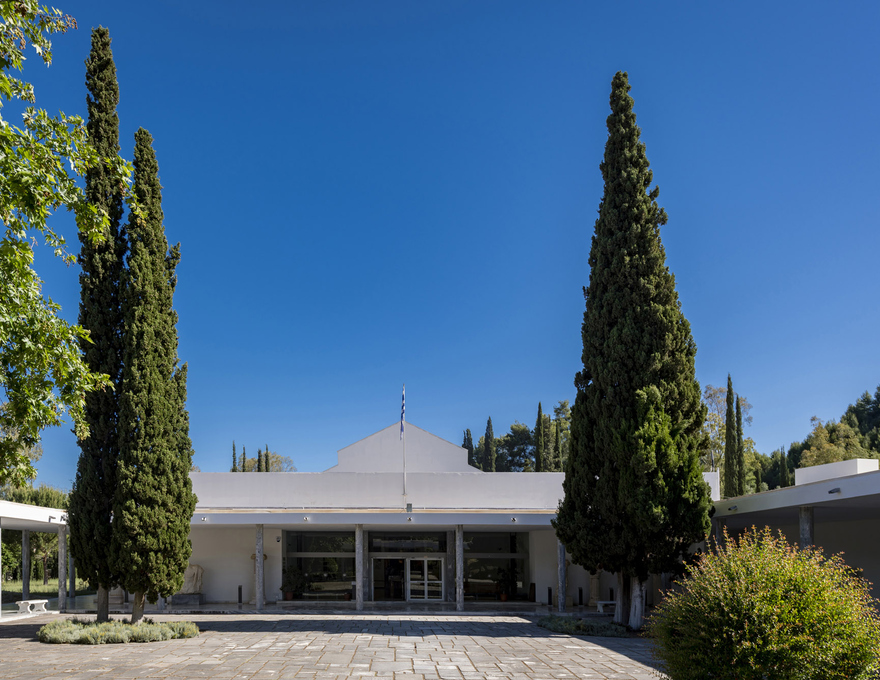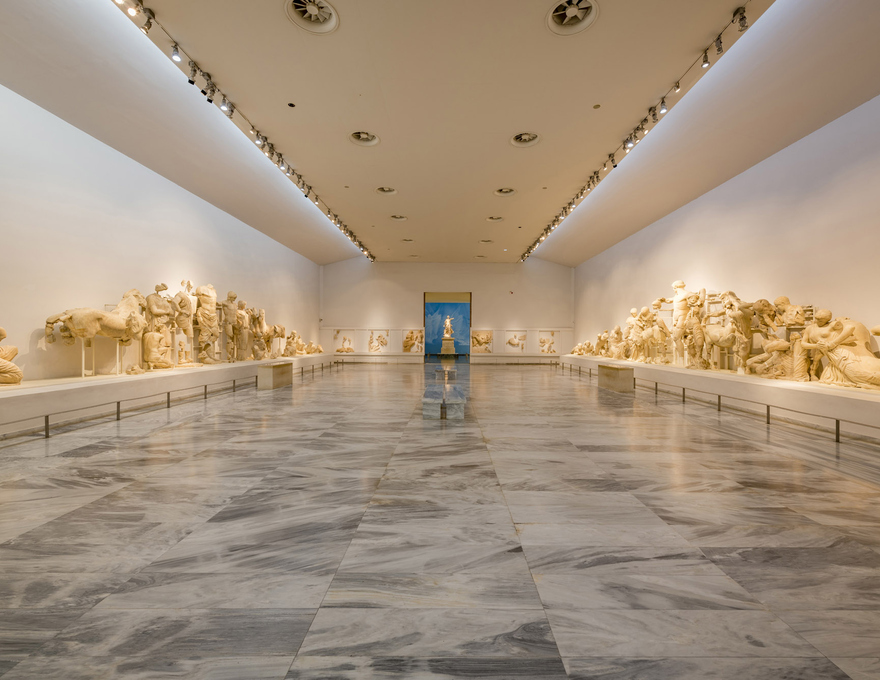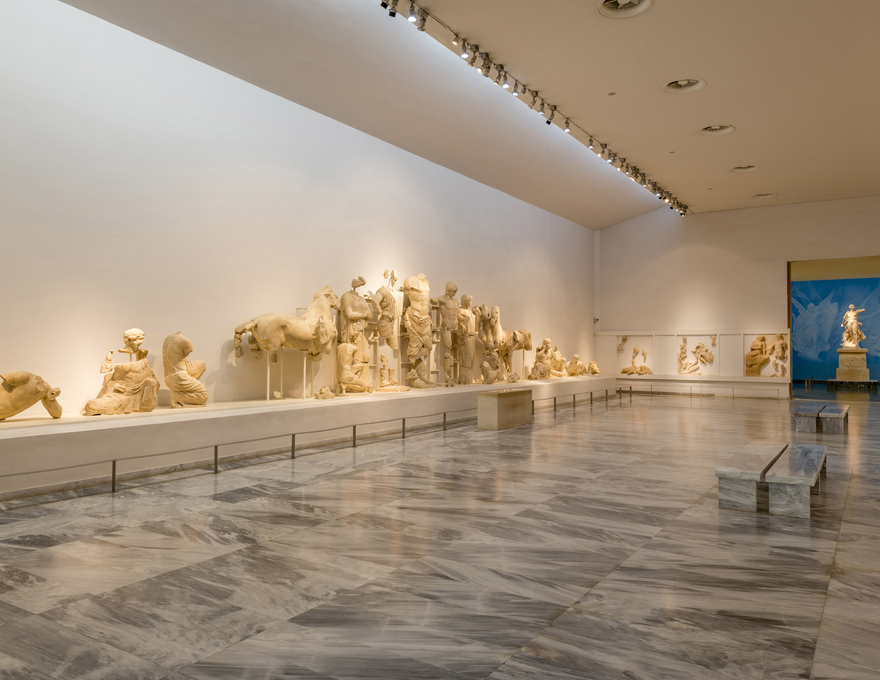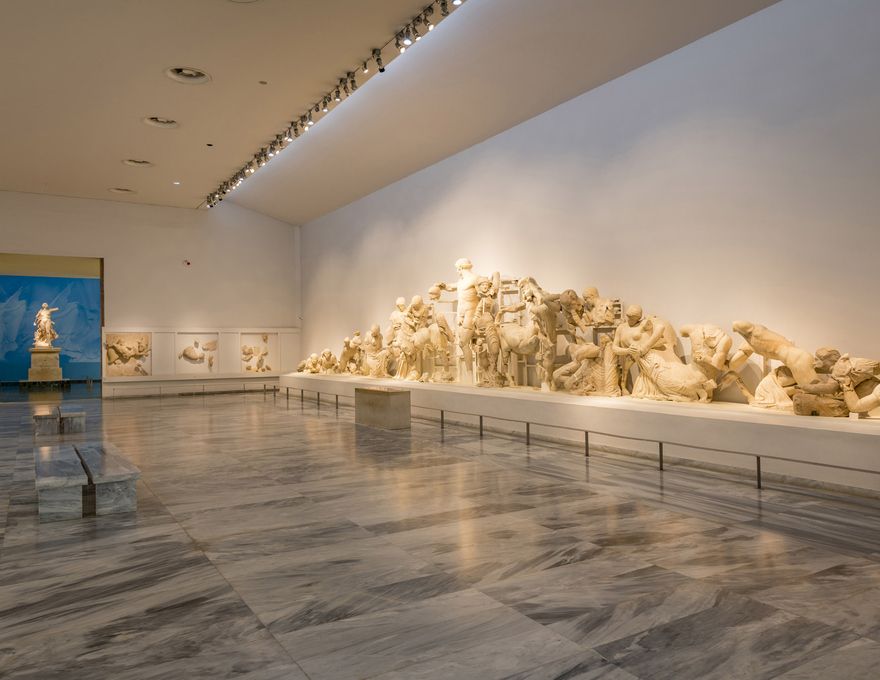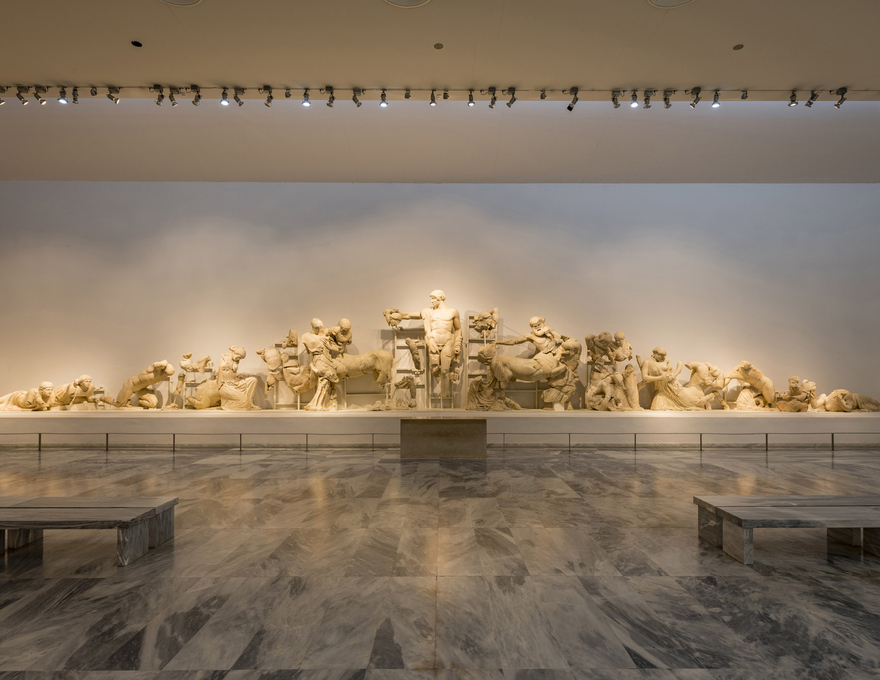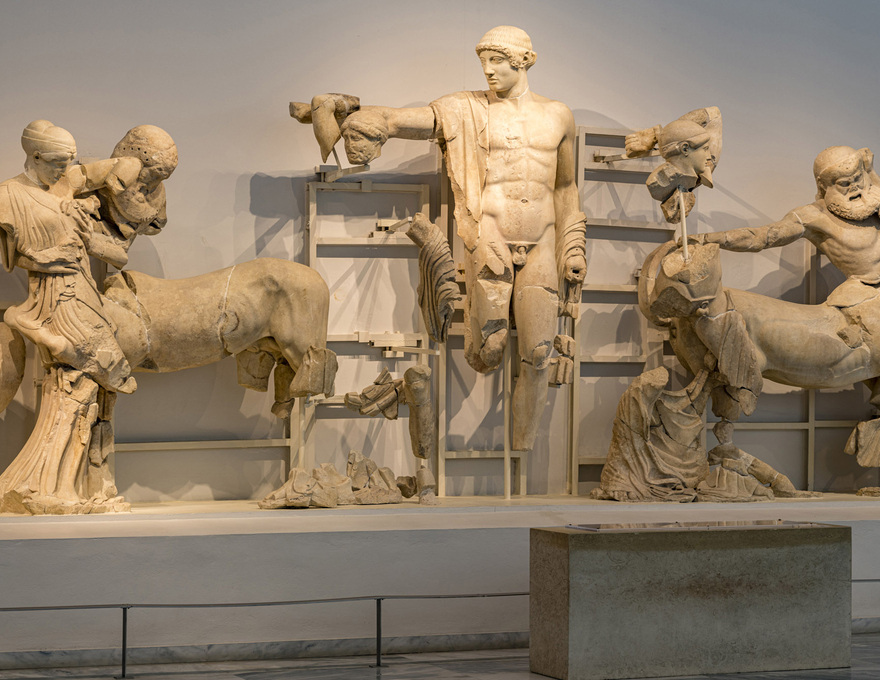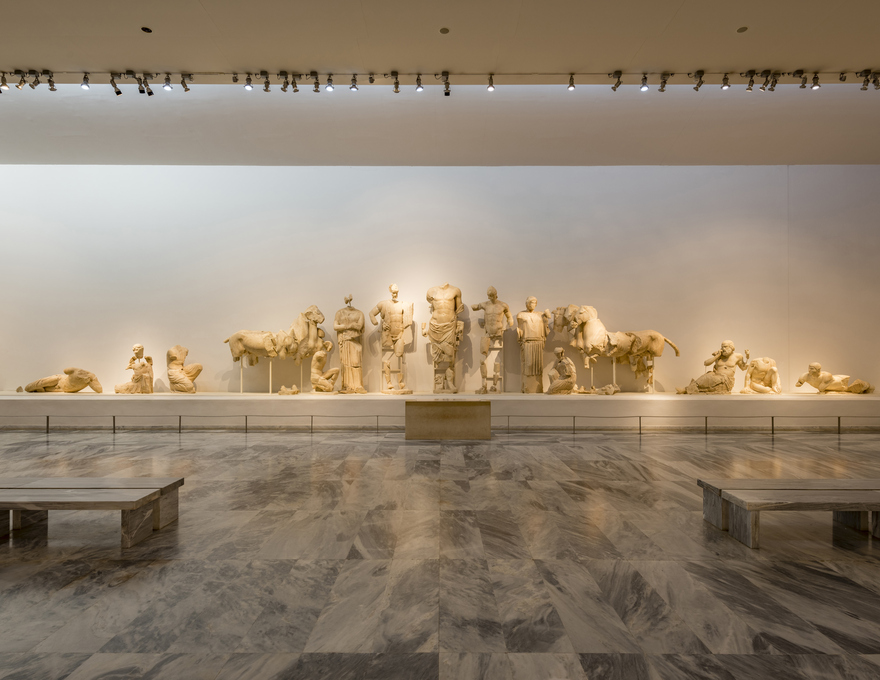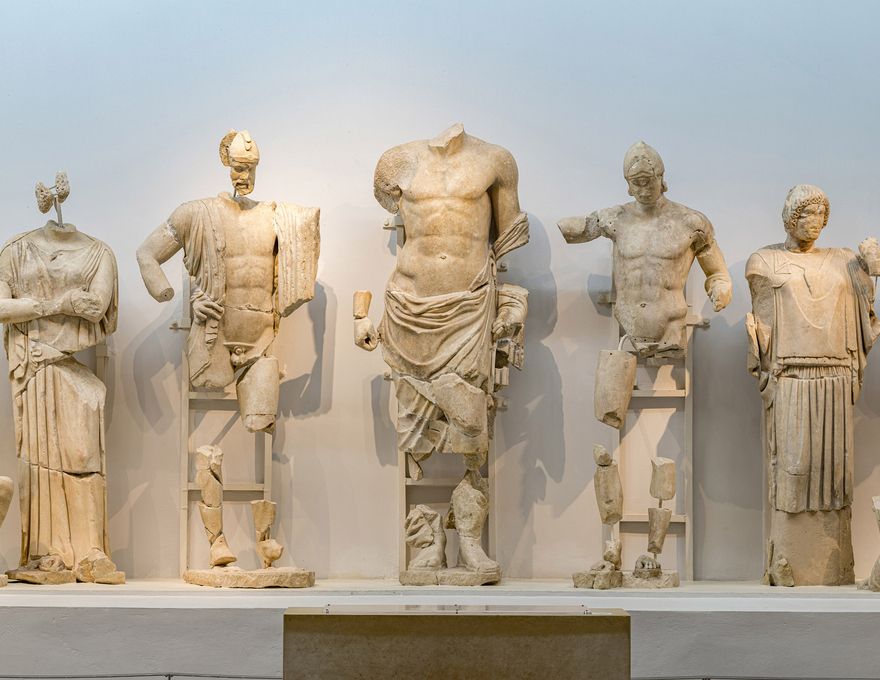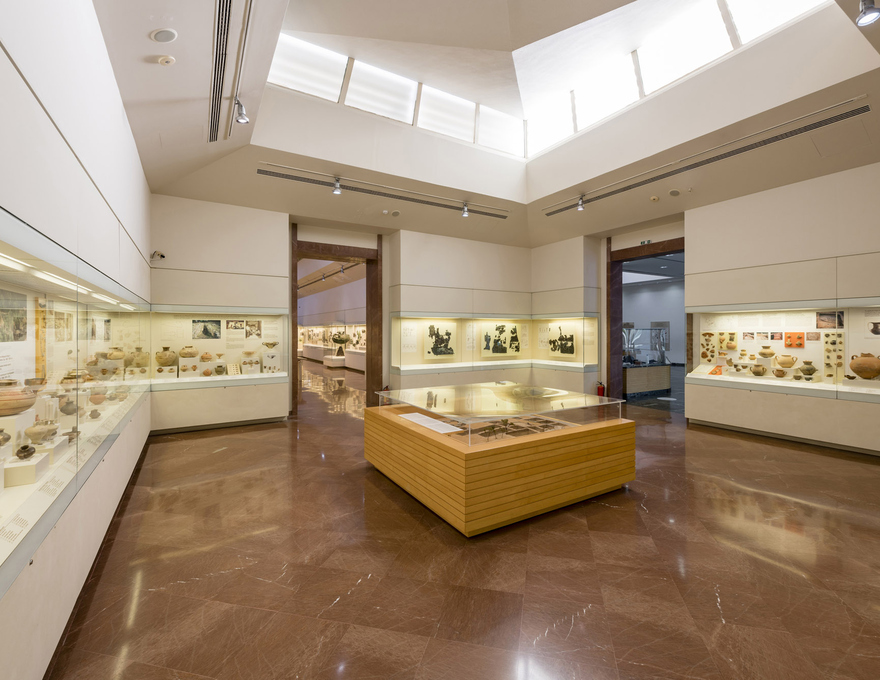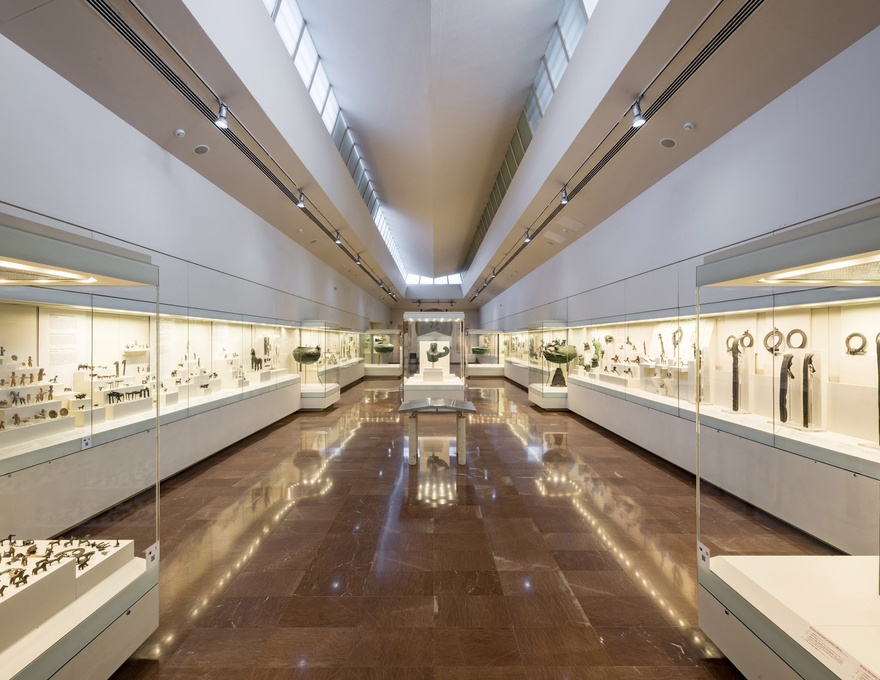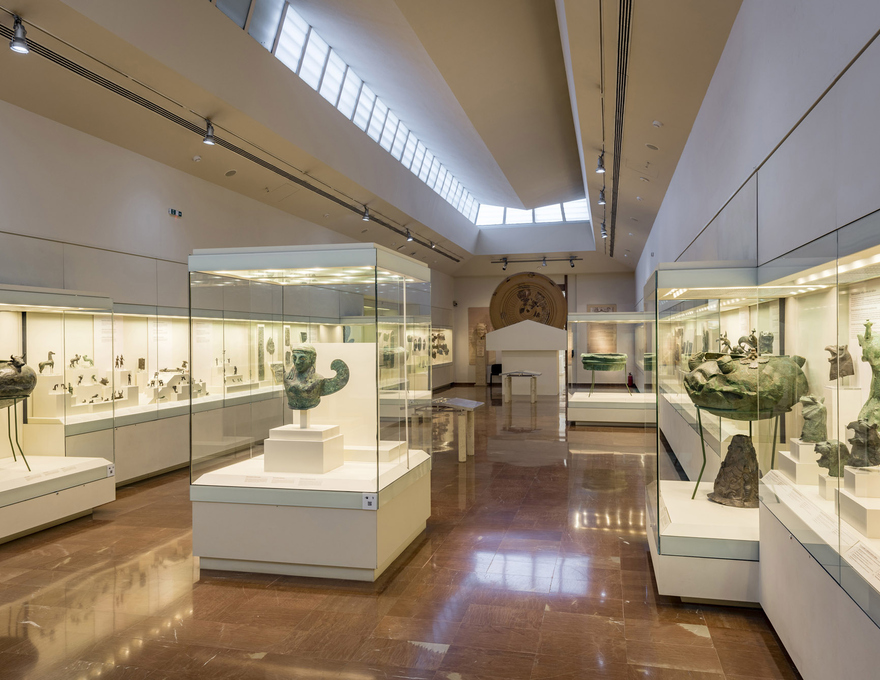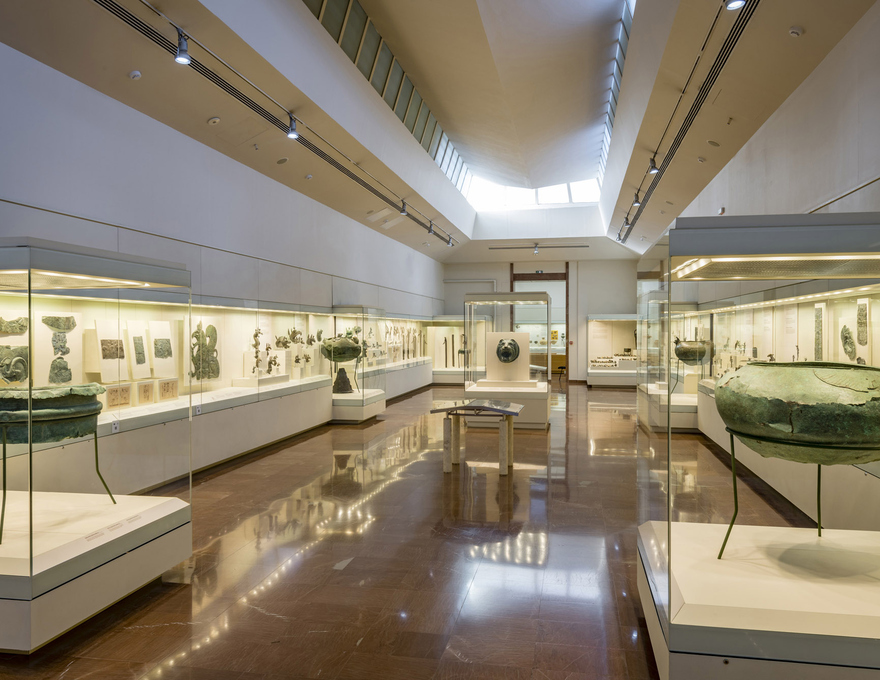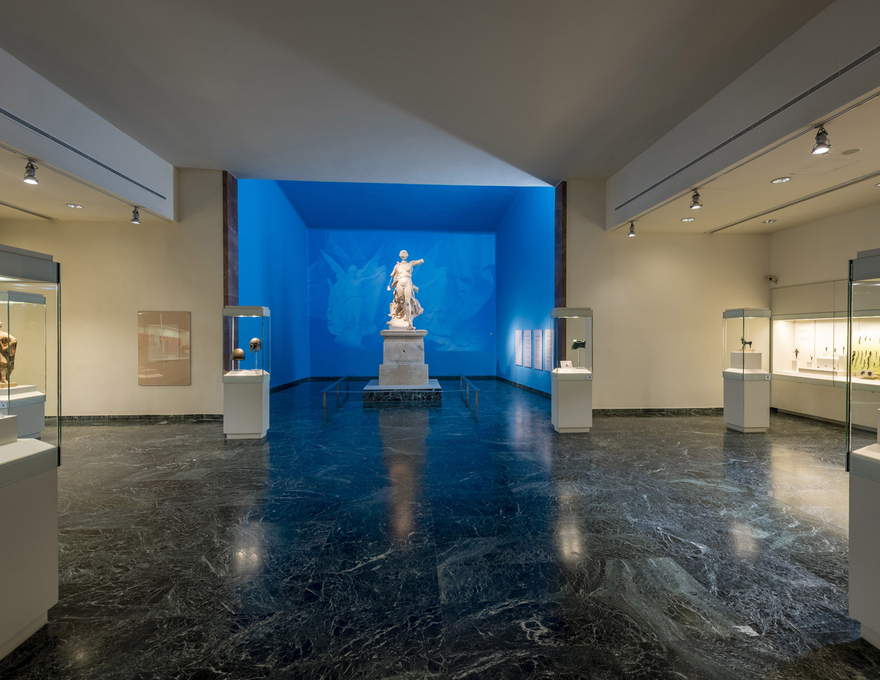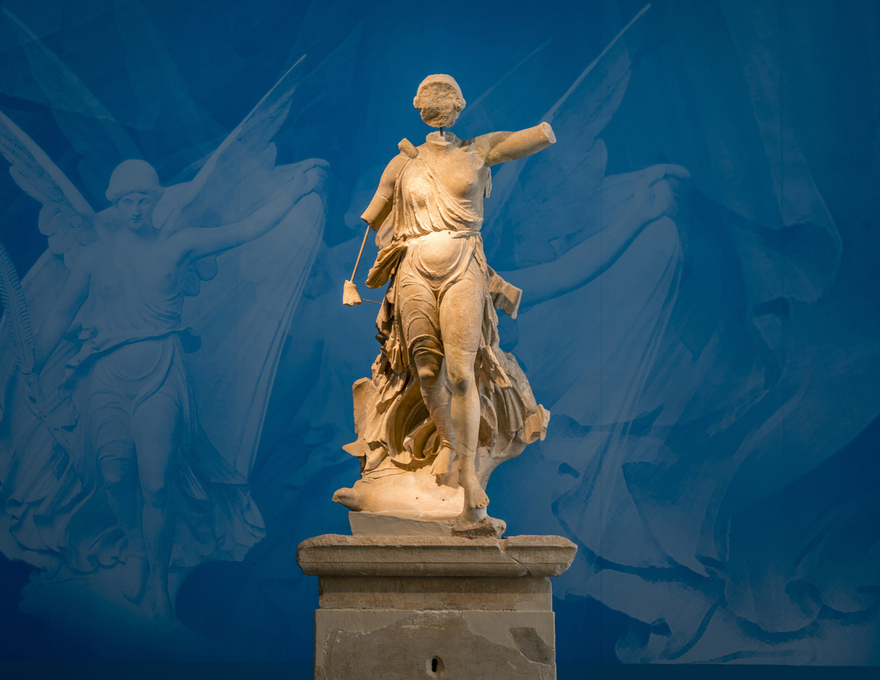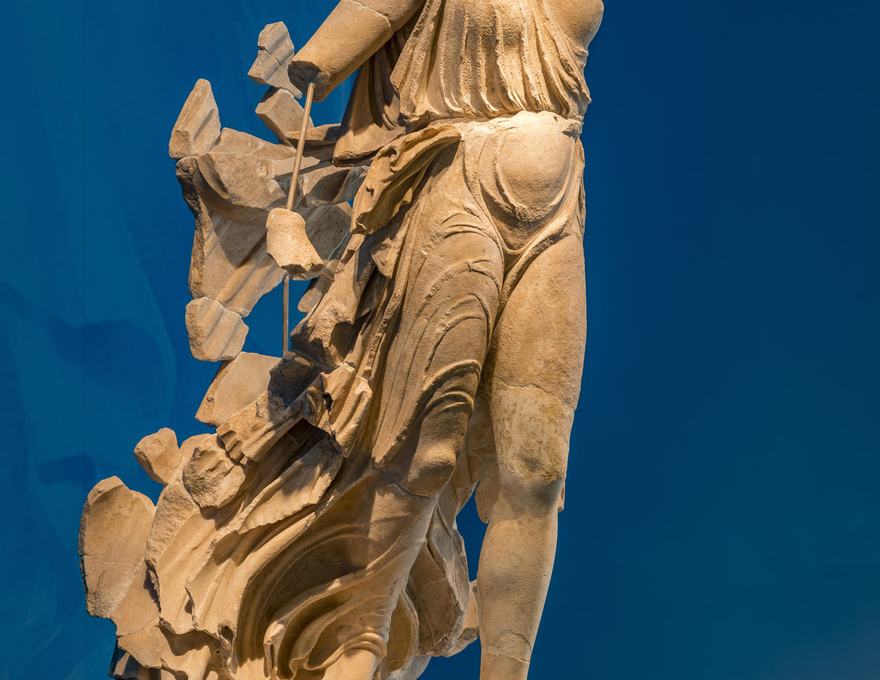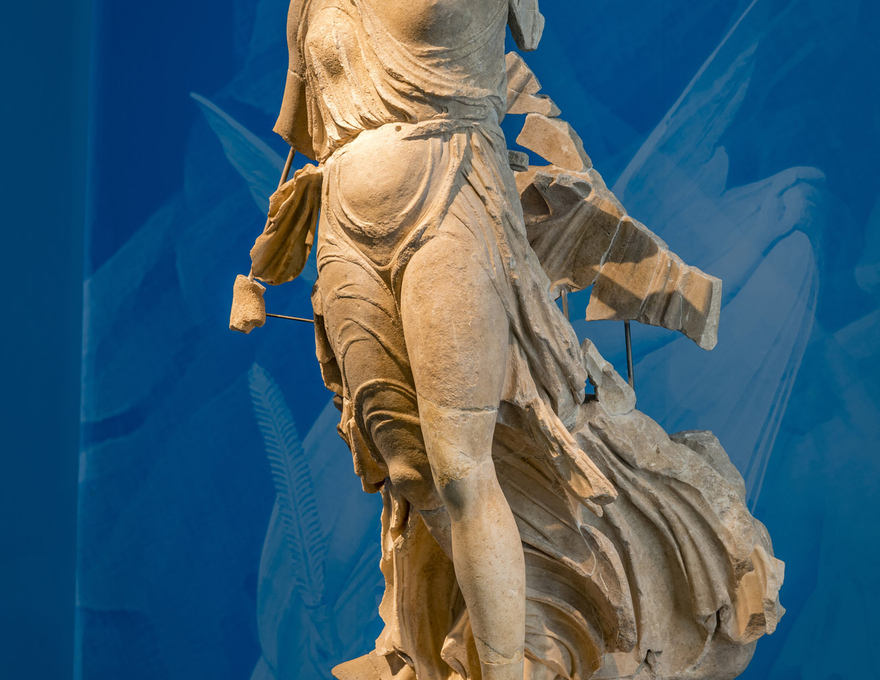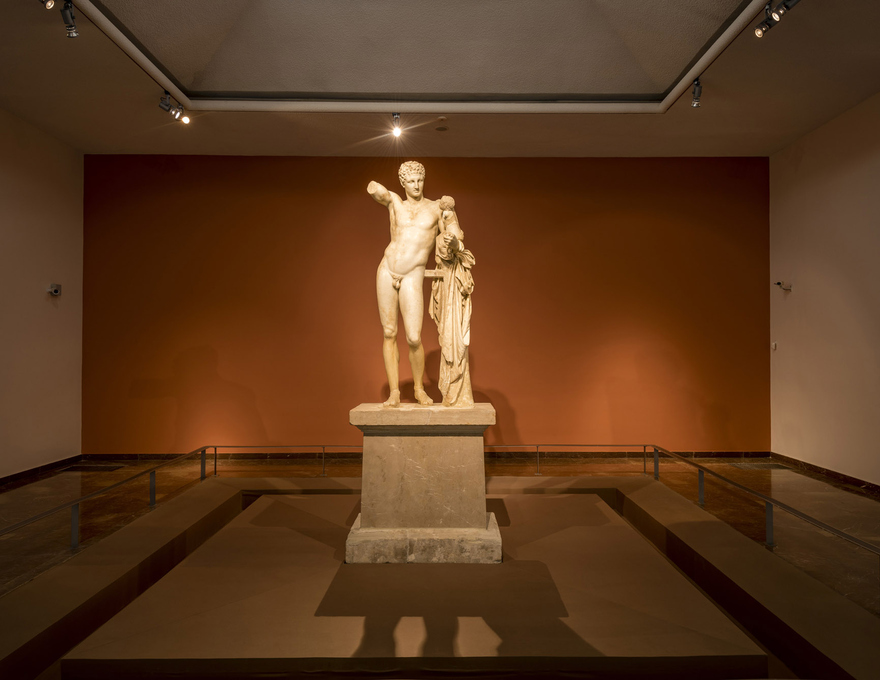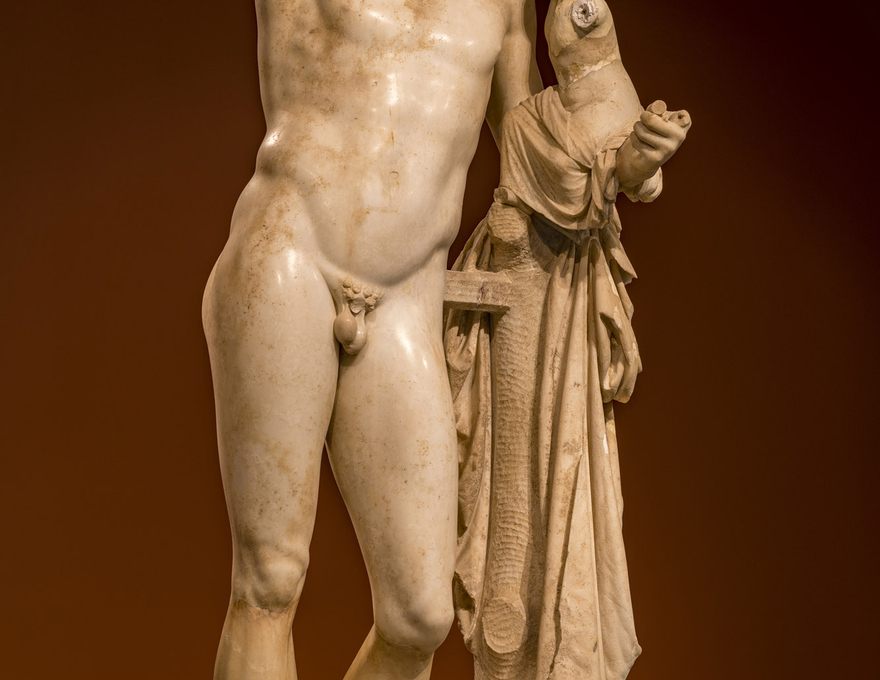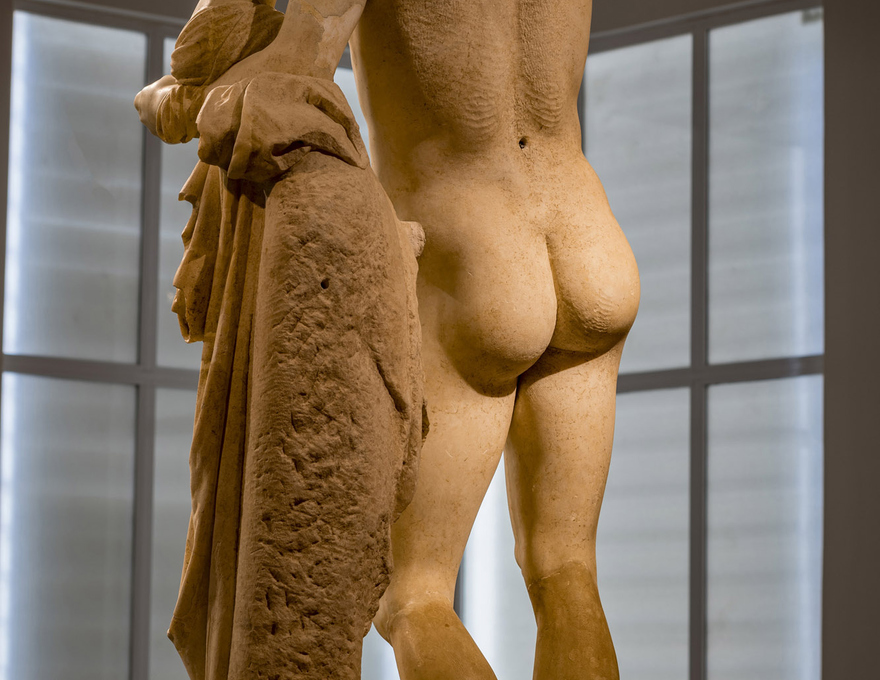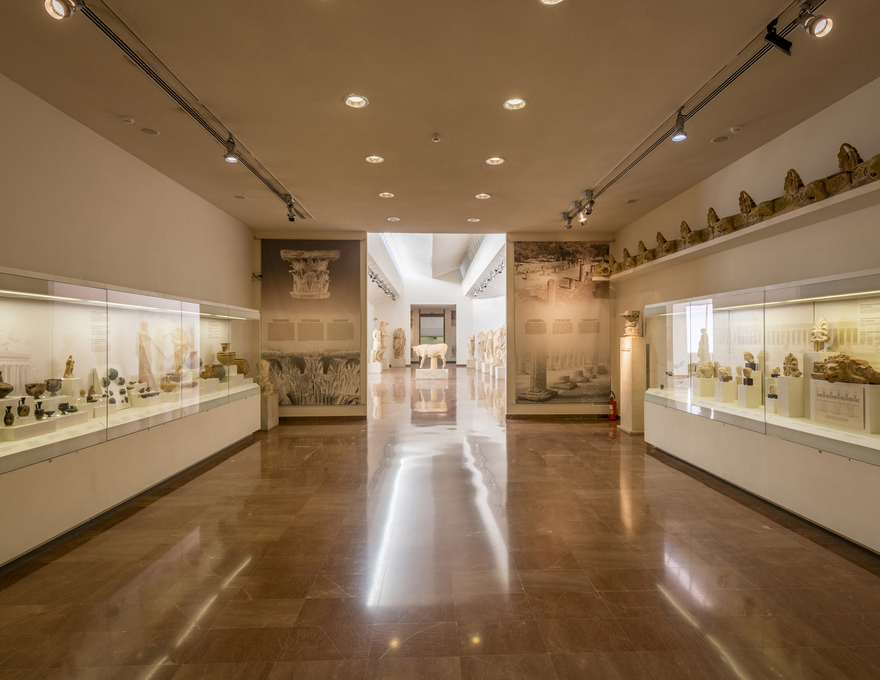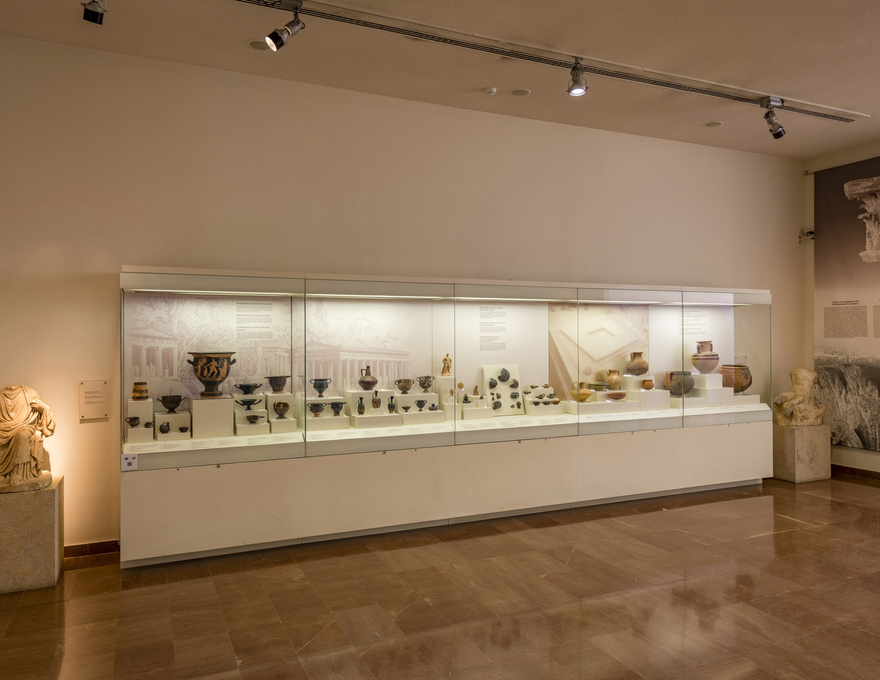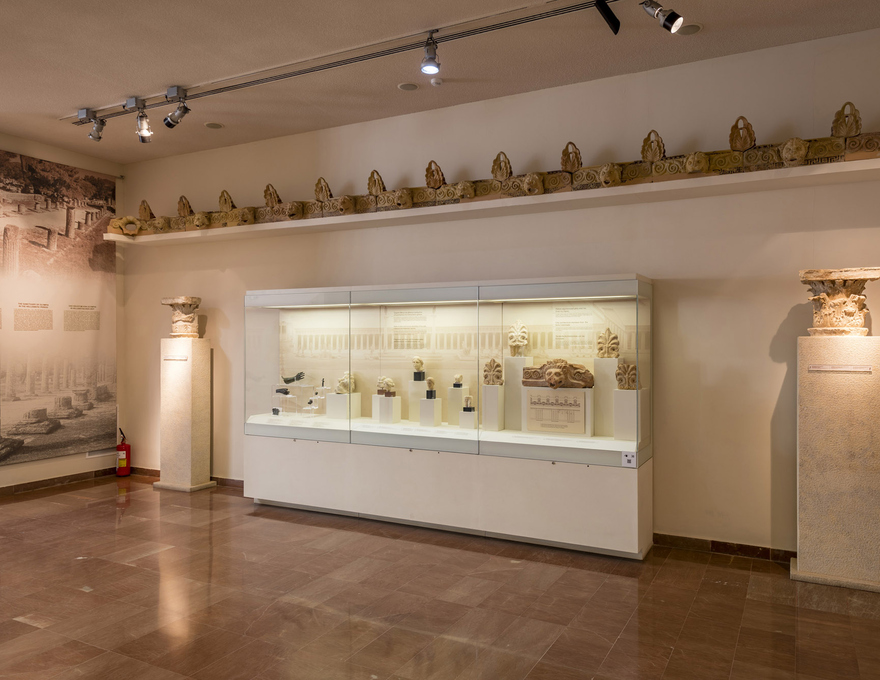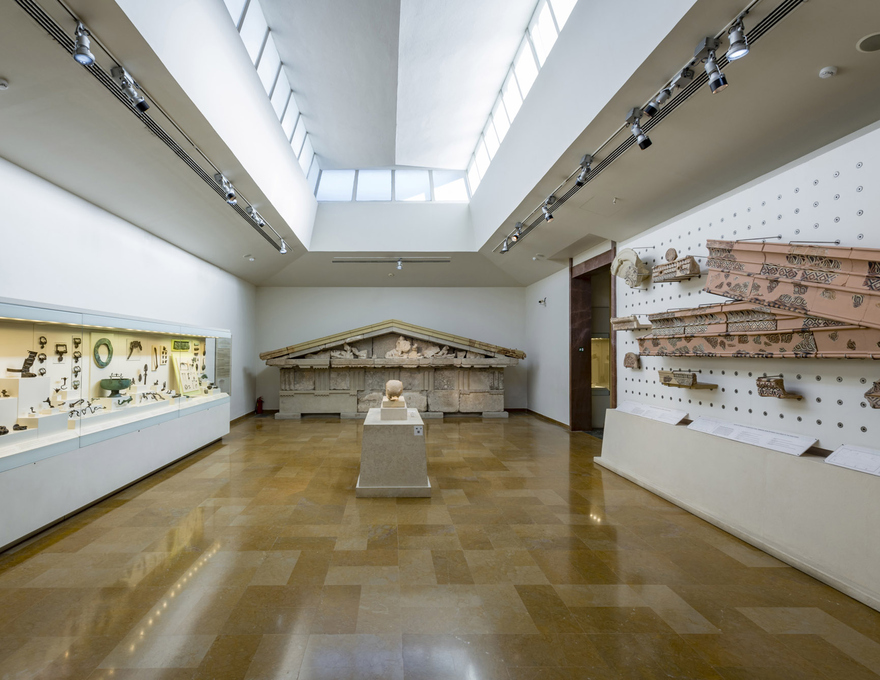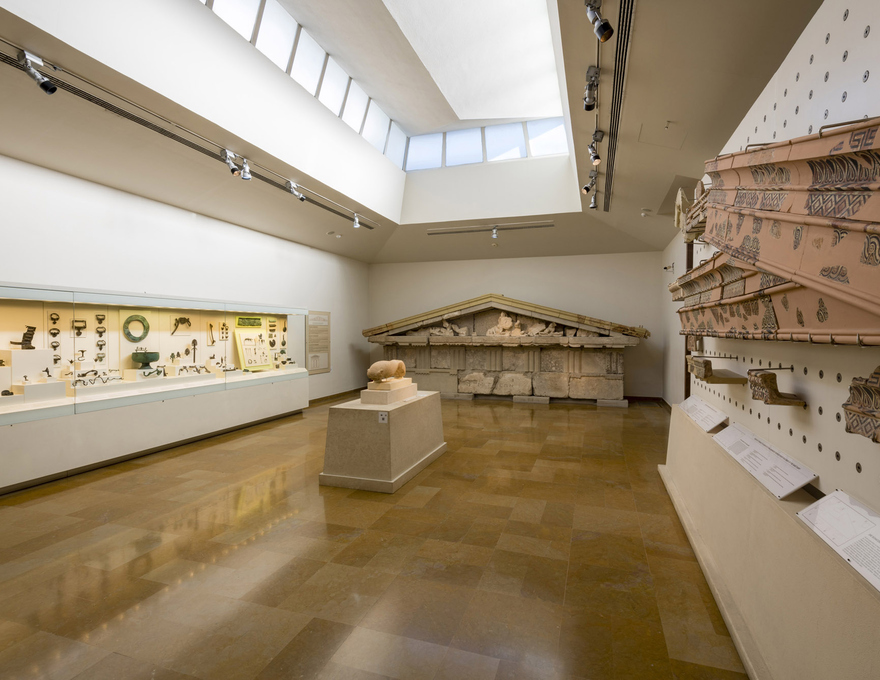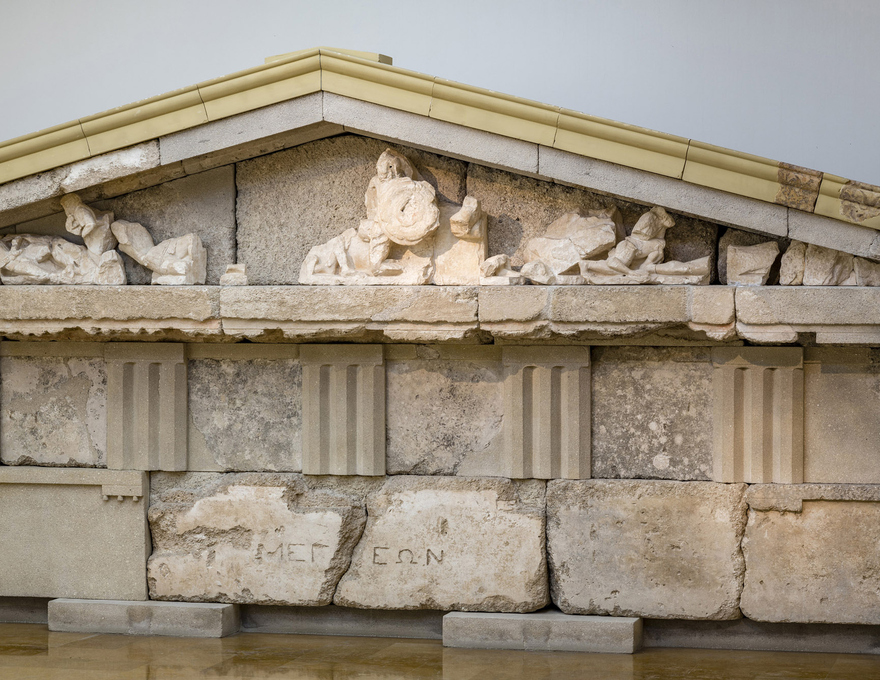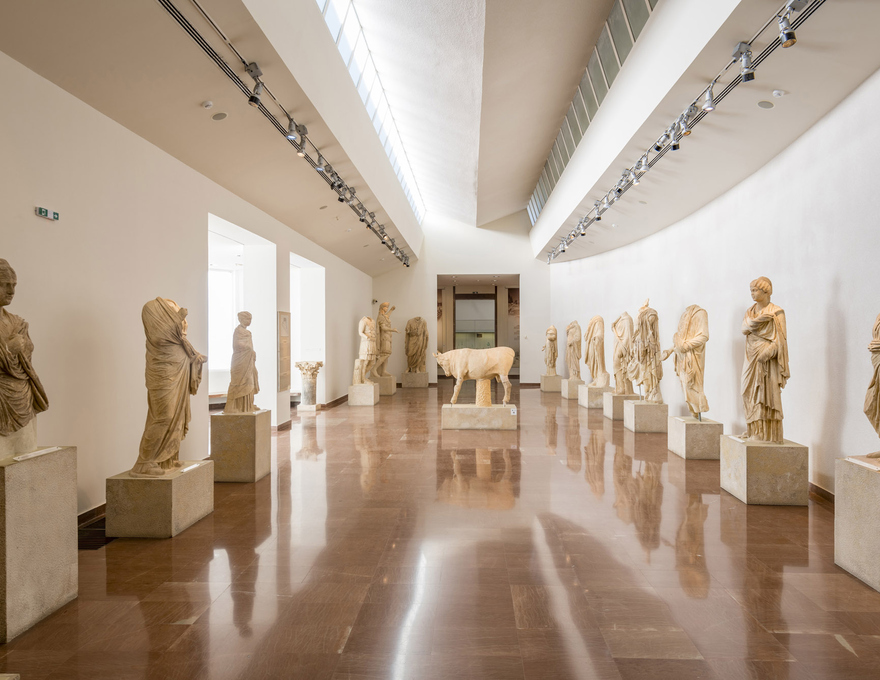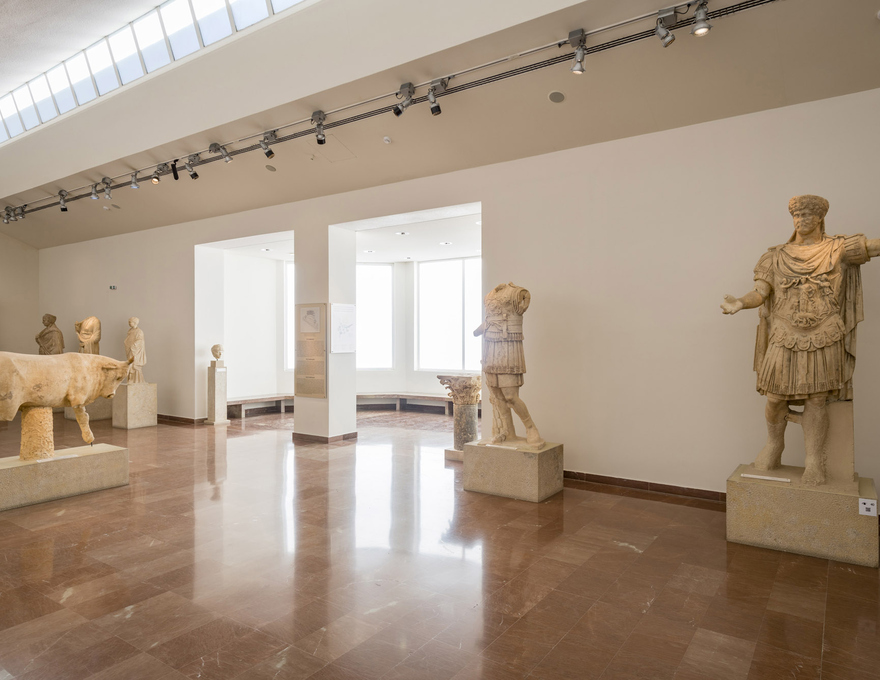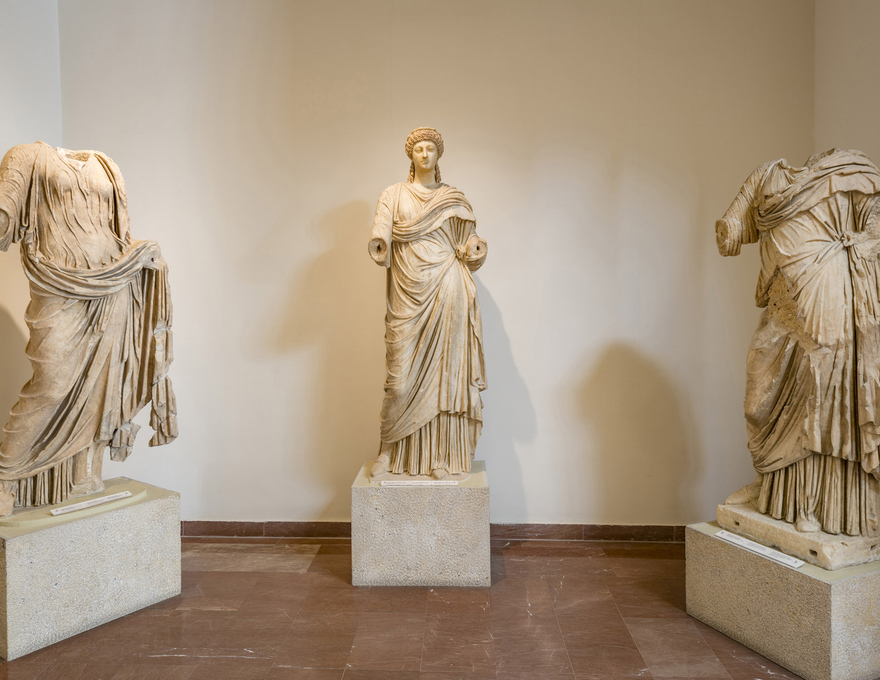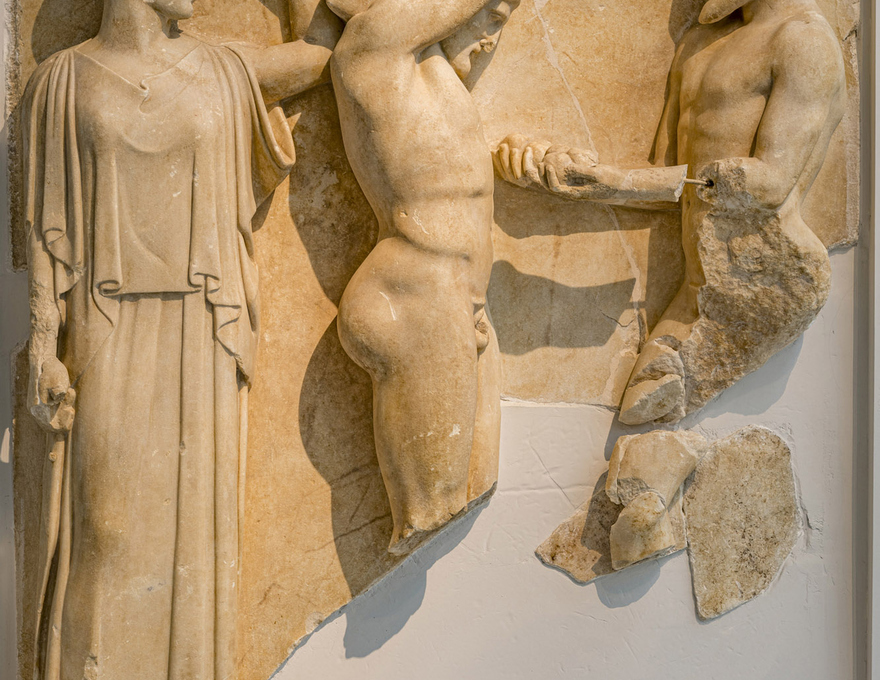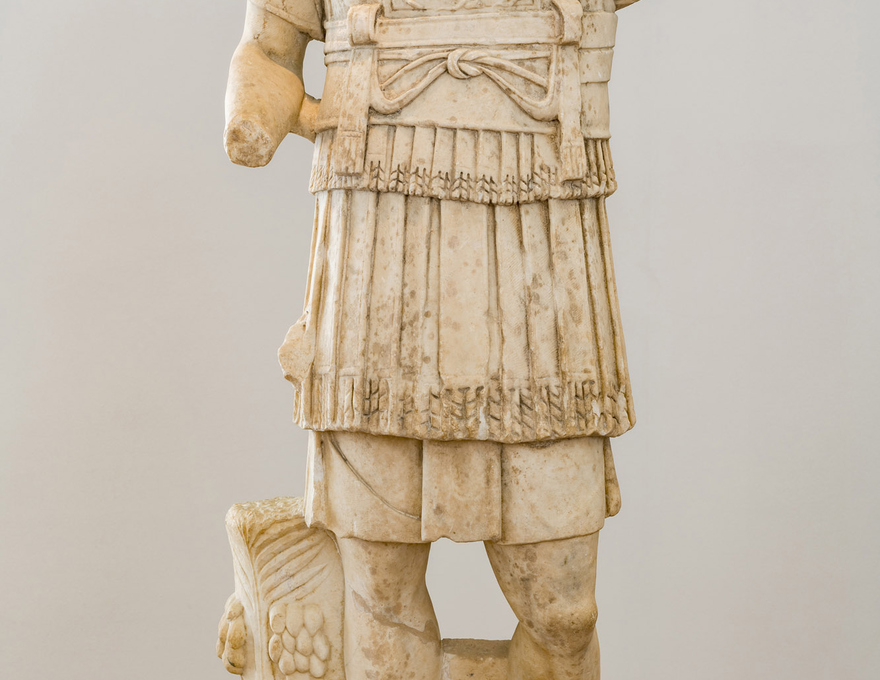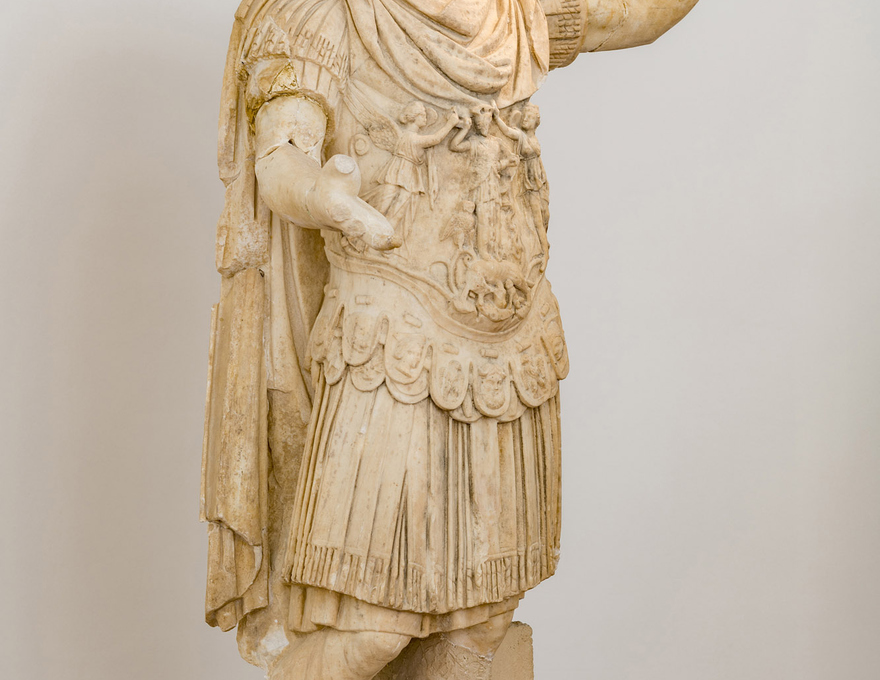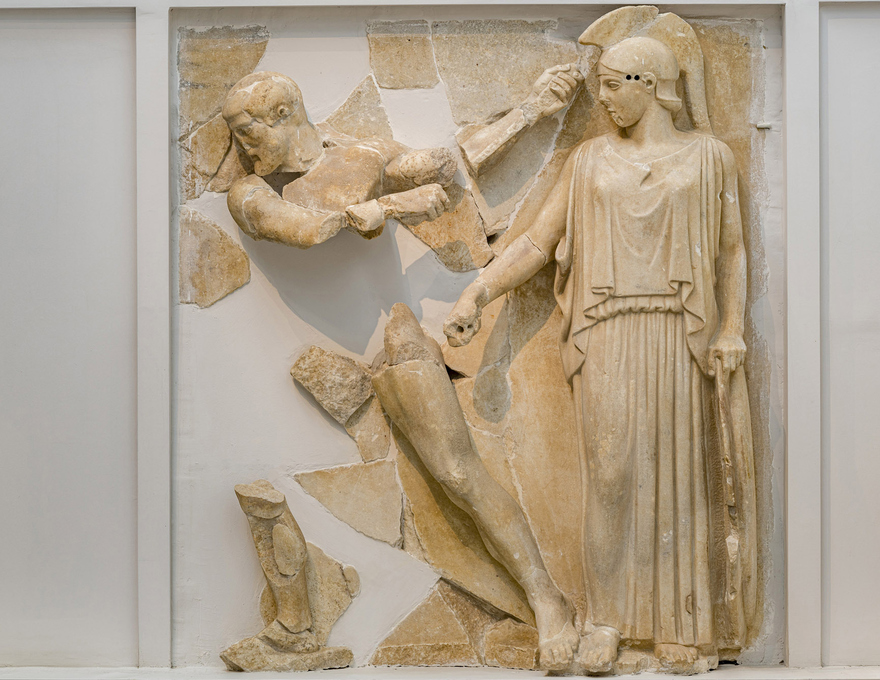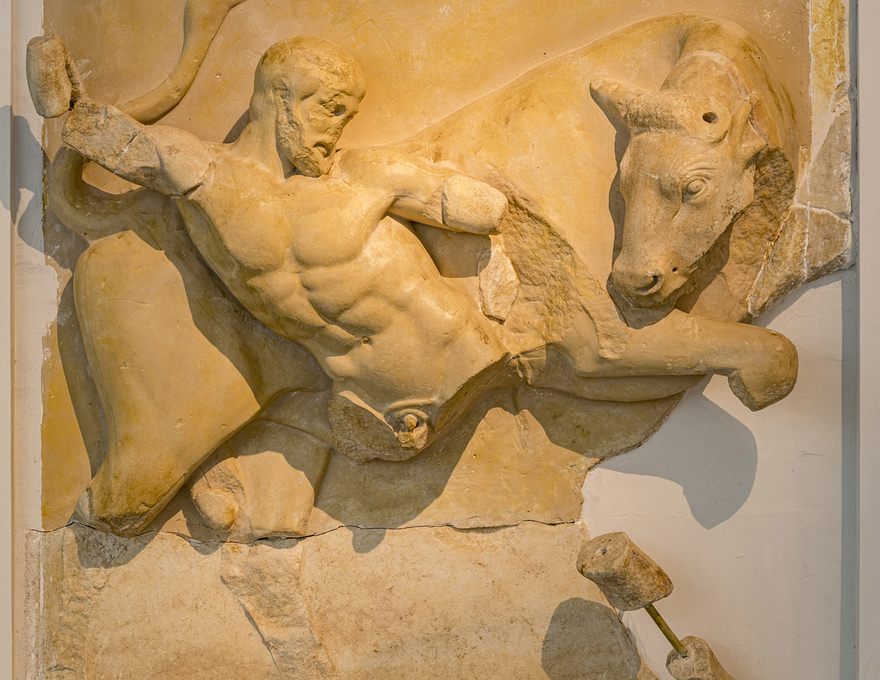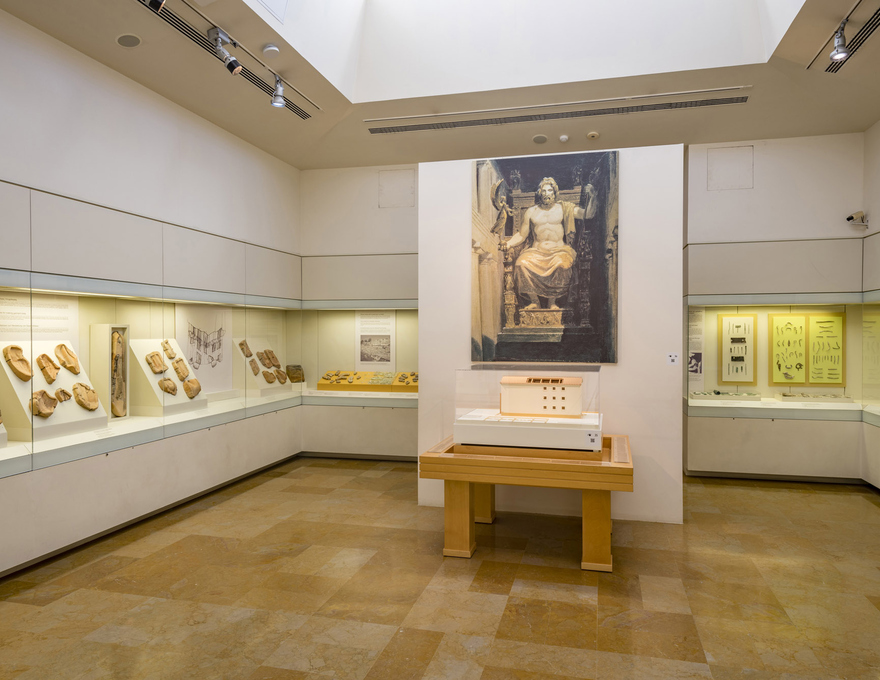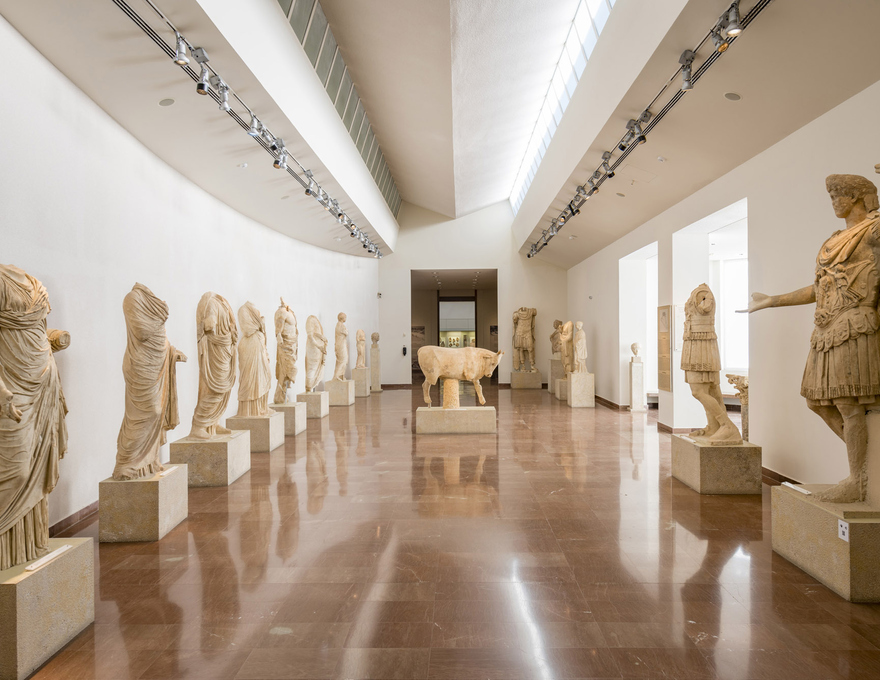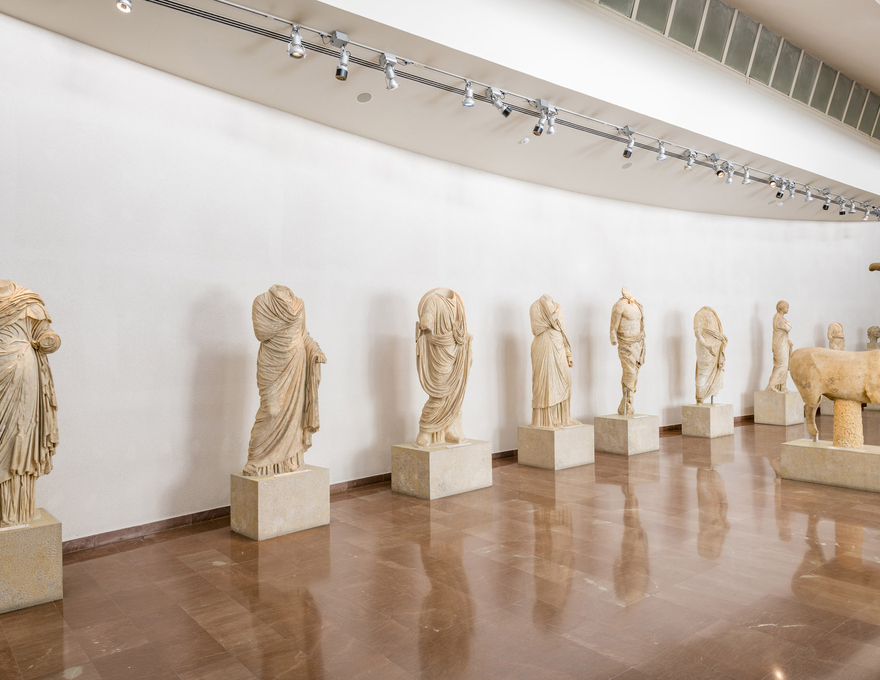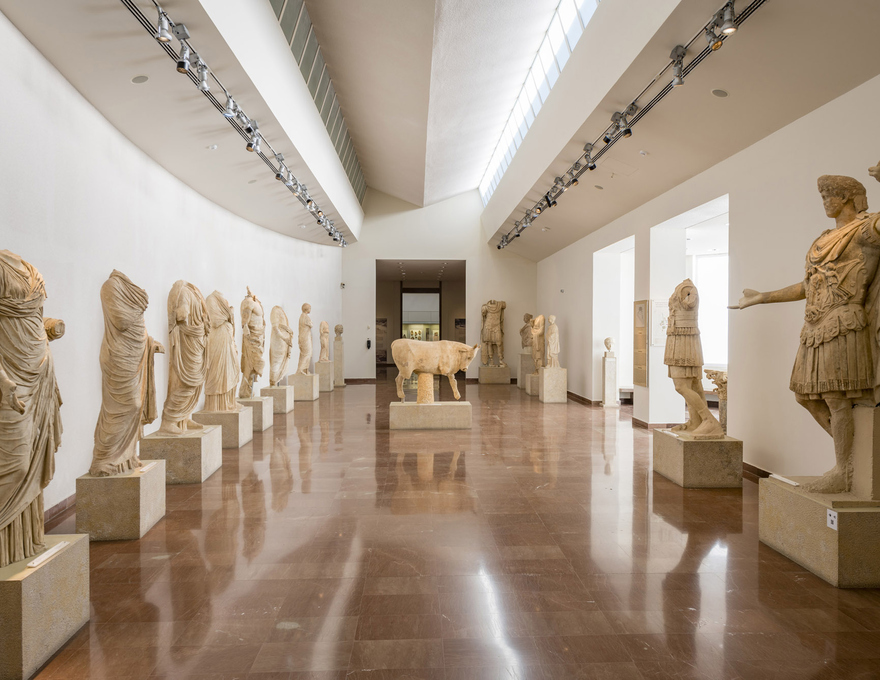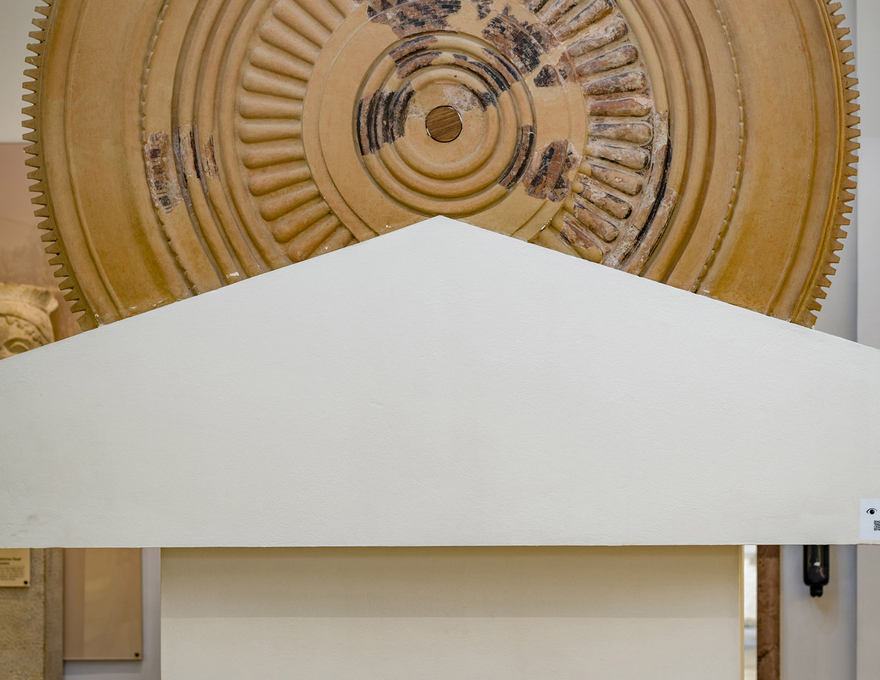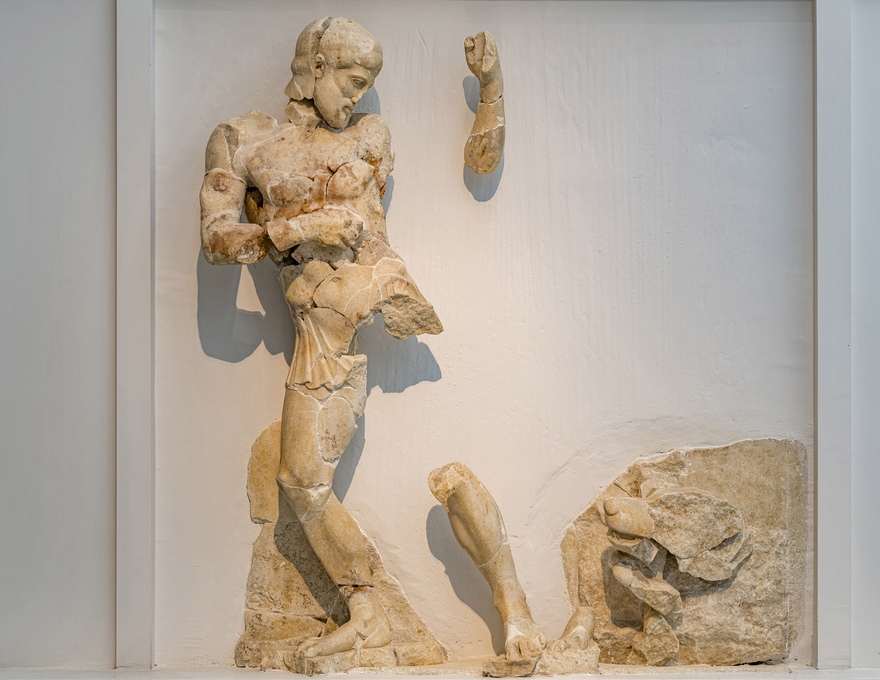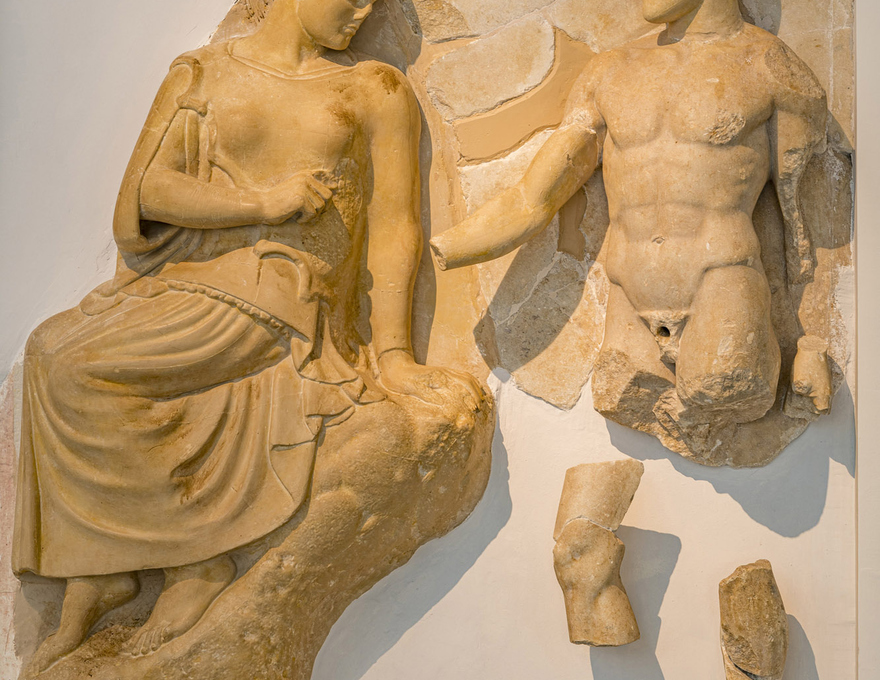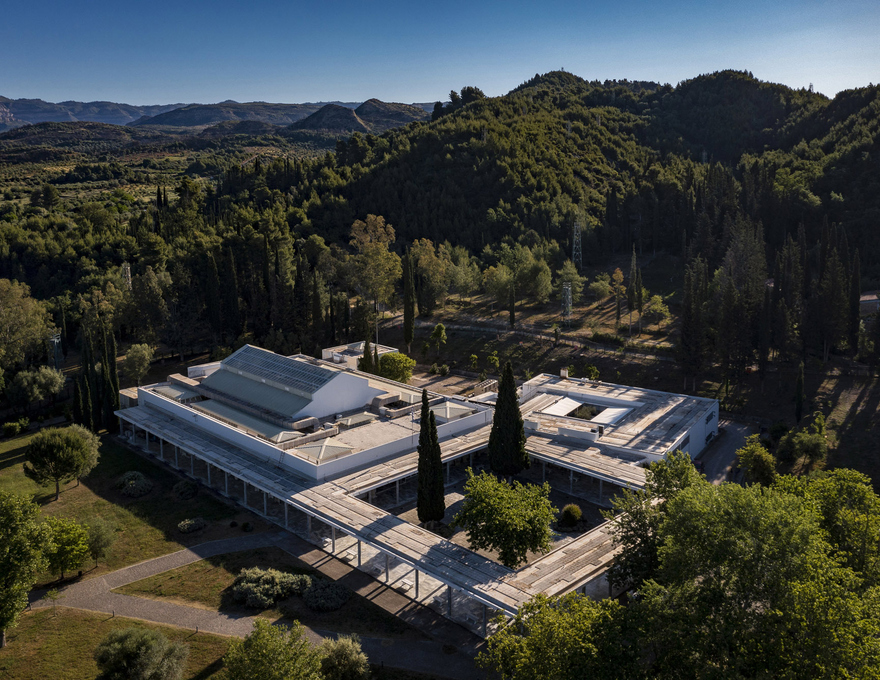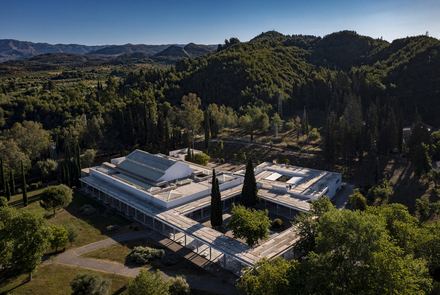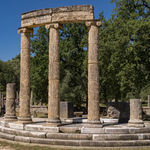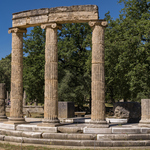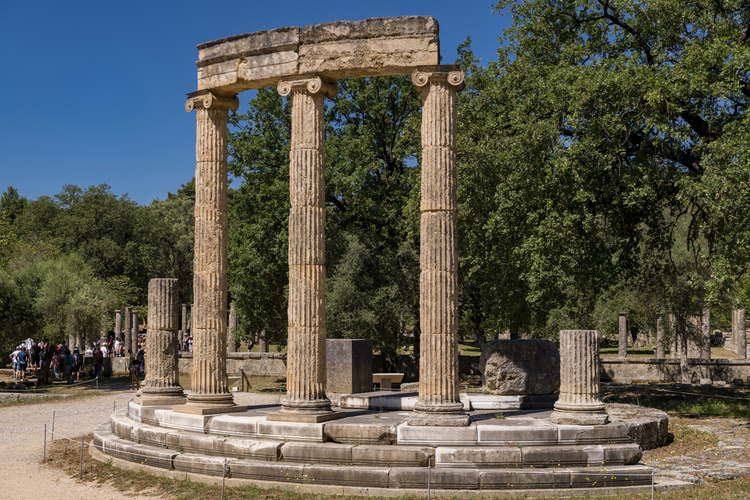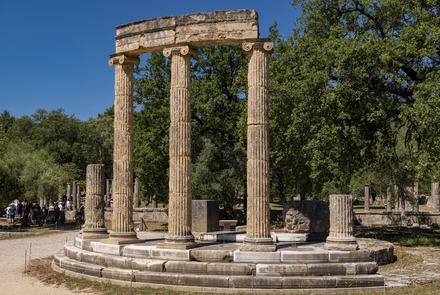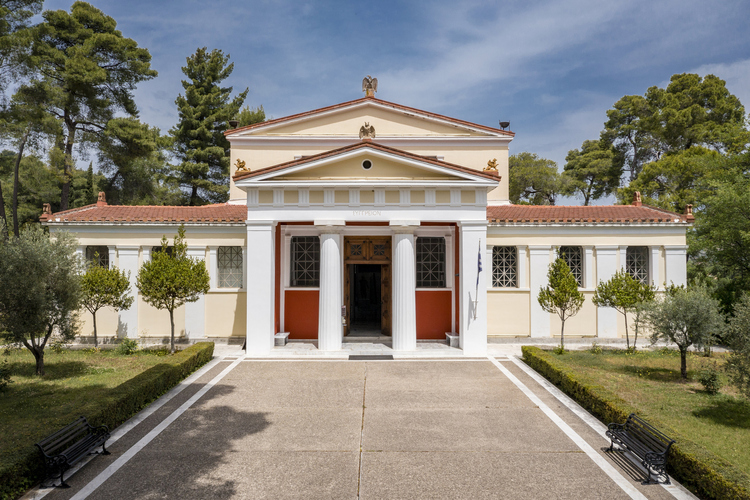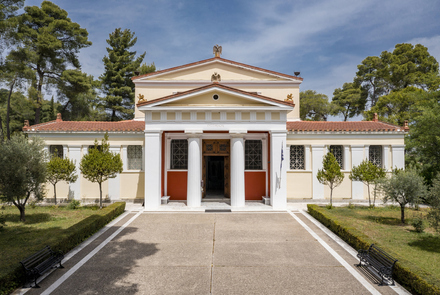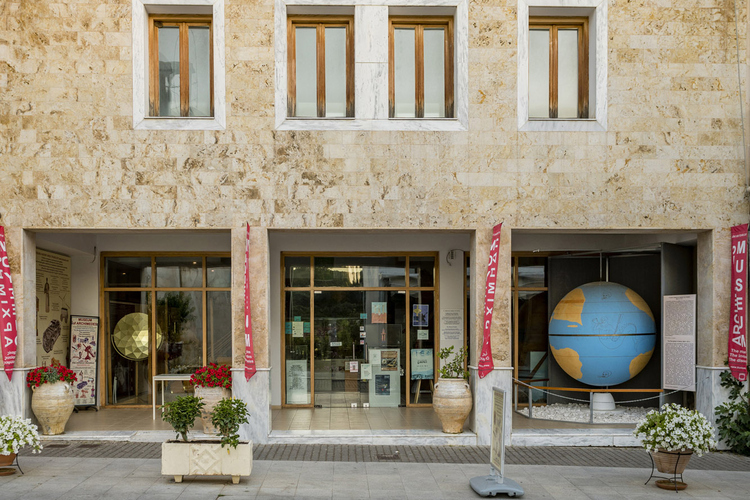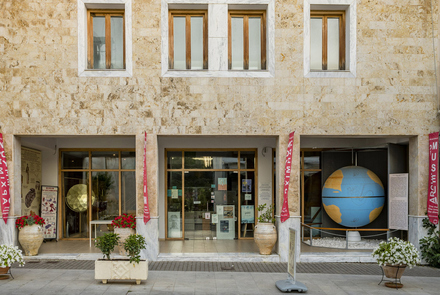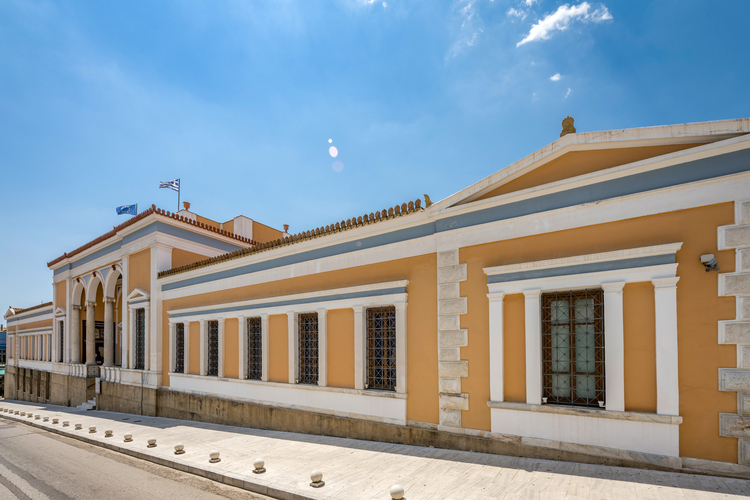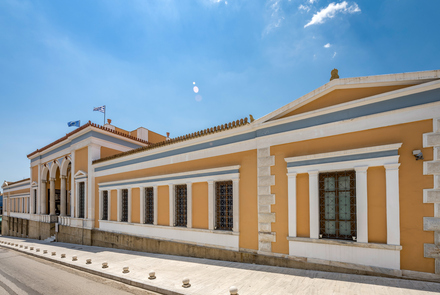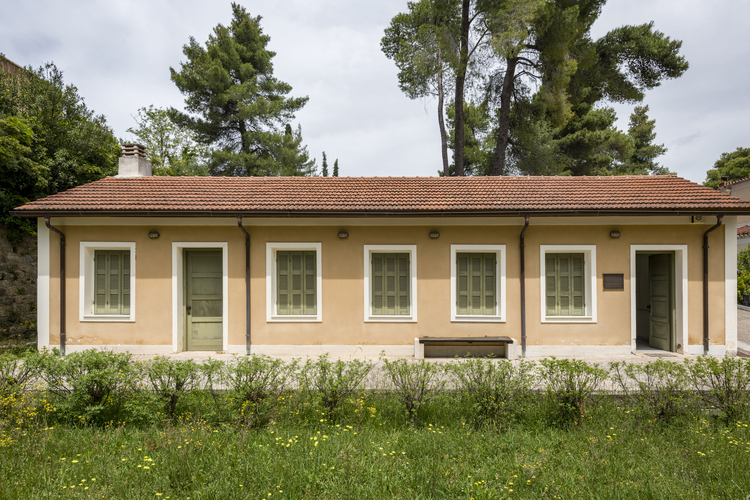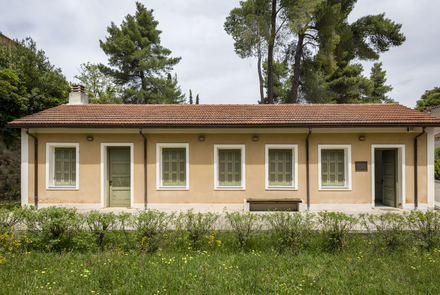Archaeological Museum of Olympia
The Archaeological Museum of Olympia is one of the most important museums in Greece and in the world, offering to the visitor the unforgettable experience of a fascinating journey into ancient Greek culture and history, in a period starting from the 3rd millennium BC up to the 7th c. AD.
The first museum in Olympia, an elegant neoclassical edifice, was built between 1883 and 1887, on a hill to the northwest of the archaeological site and housed for many decades exclusively the treasures from the famous Sanctuary of Zeus. In it were housed for the first time the artistic and historical treasures of Olympia, Hermes of Praxiteles, Nike of Paionios, the sculptural decoration of the temple of Zeus and dozens more findings from the systematic excavations that were in progress since 1875 under the responsibility of the German Archaeological Institute and the supervision of Greek archaeologists.
The devastating earthquakes of 1953 caused huge damages to the building. In the meantime, the progress of the excavations in Altis and the new findings that gradually came to light, made it imperative to build a new, larger museum, which would meet the needs and requirements of the post-war era. This is of course the new museum of Olympia which was built on the eastern bank of Kladeos in the 1960s-1970s, according to the plans of the architect Patroklos Karantinos.
Since the Munich Olympic Games (1972) the New Archaeological Museum of Olympia was fully ready. The antiquities were gradually transferred from the old to the New Archaeological Museum of Olympia, which officially opened its doors to the public in 1982. The exhibition spaces, with exhibits of inestimable value, are arranged around the perimeter of the large central hall, which exclusively houses the sculptural decoration of the Temple of Zeus. In the framework of the preparations of Greece and Olympia, for the Olympic Games of Athens in the year 2004, significant improvement projects were carried out in both the archaeological site and in the modern city. Then the fundamental renovation of the Olympia’s museums took place, which were literally reconstituted, according to the requirements of the modern museology.
Since its opening on March 24, 2004, the Archaeological Museum of Olympia has presented to its visitors important works, many of which are milestones in the history of ancient Greek art. In addition to the already mentioned top exhibits, the visitor can admire rare collections of bronze and clay objects, impressive large-scale clay statuary such as the group of Zeus and Ganymedes, the bronze Corinthian helmet of Miltiades, as well as the pediments and metopes of the temple of Zeus, real masterpieces of the Severe Style of the Classical era, the sculptures from the Nymphaion of Herodes, the cup that used in his workshop the sculptor Pheidias, etc.
Copyediting: Ephorate of Antiquities of Ilia
Ancient Olympia can be reached by train from Katakolon and Pyrgos, by bus and by private vehicle. The museum is located in a central part of Ancient Olympia.
Τhe integrated ticket, valid for one day, is 20 euros (reduced ticket 10 euros) and includes entrance to the following areas:
- Archaeological Site of Olympia
- Archaeological Museum of Olympia,
- Museum of the History of the Olympic Games of Antiquity
- Museum of the History of the Excavations in Olympia.
Individual tickets (per area of interest) are no longer issued.
The following categories of visitors are entitled to 50% reduced admission
- Greek citizens and citizens of other European Union member states over 65 years of age, upon presentation of their police ID or passport to confirm age and country of origin, during the period from October 1st to May 31st of each year.
- Parents accompanying primary education schools visits from EU member-states and the European Economic Area.
- Accompanying teachers of educational visits of schools and institutions of primary, secondary and tertiary education from non European Union countries.
Free admission - Exemption from the obligation to pay a price
1. Entrance to organized archaeological sites, historical sites, monuments and museums that belong to the State and are managed by the Ministry of Culture is free, without payment of a fee, on the following dates:
- March 6th (Melina Mercouri Memorial Day),
- April 18th (International Monuments Day),
- May 18th (International Museum Day),
- Last weekend of September (European Heritage Days fortnight),
- October 28th (National Holiday)
- First and third Sunday of each month from November 1st to March 31st of each year.
2. The following categories of visitors are entitled to free admission :
- Children and young people up to the age of 25, from EU member-states, upon presentation of their ID card or passport for verification of their age and country of origin.
- Children up to the age of 18, from non-European Union countries, upon presentation of their passport for verification of their age and country of origin.
- Persons over 25 years, being in secondary education (evening schools, second-chance schools) and in vocational schools from EU member-states and countries of the European Economic Area, upon presentation of attendance certificate bearing evidence of its duration.
- Accompanying teachers and learners during educational visits of schools and institutions of primary, secondary and tertiary education from EU member-states and countries of the European Economic Area.
- People entitled to Social Solidarity Income and members dependent on them, upon presentation of their ID card and certificate of free entry based on eligibility to the programme showing the duration, as well as a valid document certifying dependent members.
- Greek unemployed citizens upon presentation of their ID card and valid unemployment card or recent renewal of it.
- Persons with disabilities and one escort (only in the case of 67% disability), irrespective of the country of origin, upon presentation of their ID card or passport and Disability Certificate issued by the Single Body of Social Insurance (decision of the Disability Certification Center-KEPA) for Greek citizens or similar certificates issued by a corresponding authorized foreign body.
- Greek parents of families with many children, the children being up to the age of 25 and irrespective of age if they have disabilities, upon presentation of their ID card and a valid certificate of a large family status by the Greek Supreme Confederation of large family parents and the Disability Certificate (issued by the Disability Certification Center).
- Greek parents of families with three children, the children being up to the age of 25 and irrespective of age if they have disabilities, upon presentation of their ID card and a valid family status certificate issued by the Municipality and the Disability Certificate (issued by the Disability Certification Center).
- Greek single parent families with children up to the age of 25 and irrespective of age if they have disabilities, upon presentation of their ID card and a valid family status certificate issued by the Municipality and the Disability Certificate (issued by the Disability Certification Center).
- Refugees, upon presentation of the International protection applicant card or a Travelling document of the 28th July 1951 Convention (a passport of recognized refugee) or a Foreign travelling document (a passport of recognised holder of subsidiary protection) or residence permit.
- Greek citizens performing their military service, with valid military service identification card.
- Greek -Olympic Winners upon presentation of their ID card and membership card of the Hellenic Olympic Winners Association.
- Official guests of the Greek State, after request of the competent Ministry (Directorate/Office for Protocol) and approval by the General Directorate of Antiquities and Cultural Heritage.
- Members of the International Council of Museums (ICOM) and International Council of Monuments and Sites (ICOMOS), upon presentation of their ID card or passport and their valid membership card.
- Members of Societies and Associations of Friends of State Museums and Archaeological Sites, managed by the Hellenic Ministry of Culture and Sports, upon presentation of their valid membership card.
- Active employees of the Hellenic Ministry of Culture and Sports, the Archaeological Resources Fund, the Acropolis Museum and the Kanellopoulos Museum, upon presentation of their service ID card.
- Scientists licensed for purposes of photographing, studying, designing or publishing antiquities, upon presentation of the relevant license.
- Members of the Chamber of Fine Arts of Greece, upon presentation of their valid membership card.
- Greek tourist guides, upon presentation of their professional ID card.
- Journalists, upon presentation of a valid journalist ID card
- Holders of a three-year Free Entry Pass.
- Members of the Association of Greek Art Historians, upon presentation of their valid membership card.
3. The following categories of visitors are entitled to obtain a three-year Free Entry Pass -retaining the right of renewal- issued by the competent Services of the Hellenic Ministry of Culture and Sports :
- Active members of the Central Councils and Regional Councils of Monuments of the Hellenic Ministry of Culture and Sports.
- Active members of the Board of Directors of the Archaeological Resources Fund, the Acropolis Museum and the Kanellopoulos Museum.
- Active Directors and members of Foreign Archaeological Schools in Greece.
- Contract employees of the Hellenic Ministry of Culture and Sports, the Archaeological Resources Fund, the Acropolis Museum and the Kanellopoulos Museum. Renewal of the free pass is possible if they continue to be employed by the Ministry of Culture and Sports, the Archaeological Resources Fund, the Acropolis Museum and the Kanellopoulos Museum.
- Retired employees of the Hellenic Ministry of Culture and Sports, the Archaeological Resources Fund, the Acropolis Museum and the Kanellopoulos Museum.
- Civil Servants in the Legal Advisor Office of the Hellenic Ministry of Culture and Sports.
- Greek active teachers in primary, secondary and tertiary education. In the case of substitute/hourly teachers, renewal of the free pass is possible if they continue to be employed as teachers.
- Graduates of Departments of History and Archaeology of Schools of Philosophy, as well as graduates from Schools of Architecture, Fine Arts, Conservation of Antiquities and Works of Art, including Technicians of Conservation of Antiquities and Works of Art from Greece or from equivalent Schools of EU member-states and the European Economic Area, as well as holders of Master's or PhD Degrees from those Schools and Departments.
- Graduates of Museum Studies programmes and Schools and Departments of Cultural Management of Higher Education Institutions in Greece or equivalent Institutions of EU member-states and the European Economic Area, as well as holders of Master's or PhD Degrees in those studies.
- Students and graduates of the Preparatory and Vocational School of Fine Arts of Panormos Tinos.
- Police officers of the Department of Cultural Heritage and Antiquities of Security Directorates.
Holidays
- 1 January: closed
- 25 March: closed
- Good Friday: 12:00-17:00
- Holy Saturday: 8:00-15:00
- 1 May: closed
- Easter Sunday: closed
- 25 December: closed
- 26 December: closed
- Ancient Olympia P.C. 27065
- efahle@culture.gr
- 2624022742 / 2624023753
- Police Department of Ilia - P.D. of Ancient Olympia, Ephorate of Antiquities of Ilia
Winter (November - April) :
08:30 a.m. - 03:30 p.m.
Summer (May - October) :
08:00 a.m. - 08:00 p.m.
Last admission (all days): 15 minutes before closing time.
Website:

